SIMET Electric box (breaker panel)

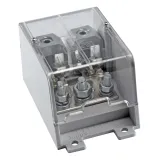
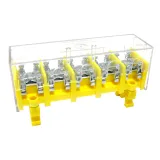
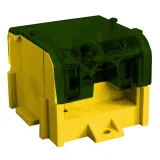
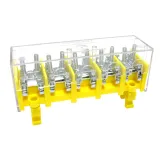

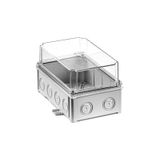
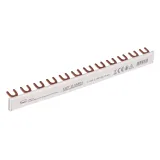
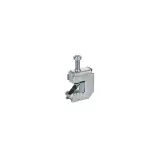

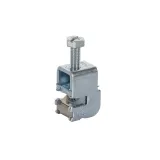
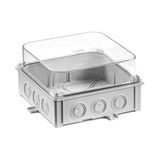


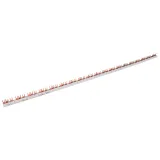
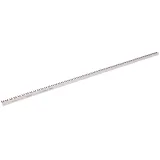
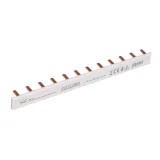
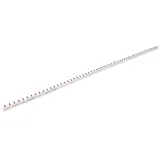
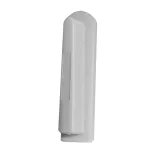
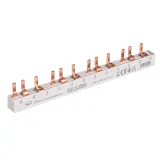
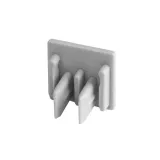
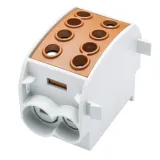
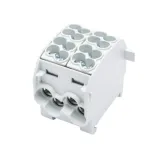
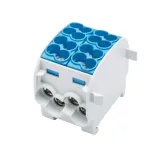
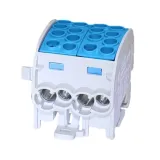
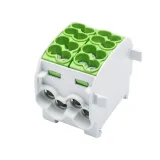
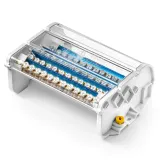


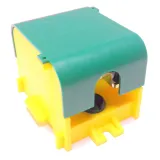





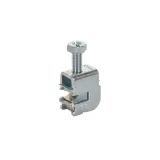
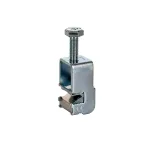
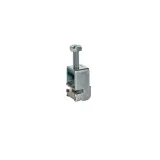
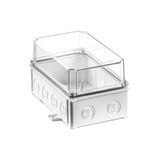


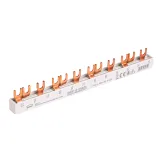
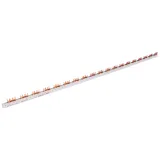


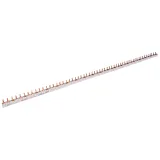
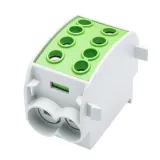
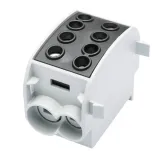
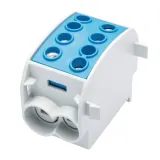
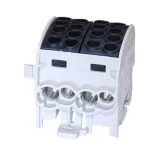
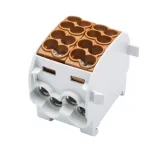
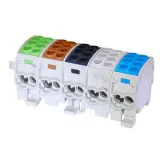








-
-
1
- 2
-
simet distribution boards Application scope and build logic
Fit-outs move faster when enclosures match conductor windows, IP class, and mounting depth on the first try. Simet boards use reinforced PA/PC housings or sheet-steel doors on plastic chassis, with captive screws, brass inserts, and neutral/earth bars that actually take ferrules without splaying. Sizes run 4 to 72 modules per row, up to 3–4 rows; removable DIN rails and depth shims leave space for RCBOs, AFDDs, surge devices, and control relays. Typical ratings: 230/400 V AC, 50/60 Hz, insulation 690 V, ambient −25…+55 °C; gaskets maintain IP30–IP65 by series and door option, with IK07/IK08 impact for corridors and plant rooms. Knockouts arrive circular and stay round—critical when glands must seal first time.
Technical specifications and standards
Empty housings align with EN 62208; assembled consumer and similar boards comply with EN 61439-3, with temperature-rise and dielectric data published per configuration. Clearances/creepage meet pollution degree 2; flame behaviour is verified by glow-wire 750–960 °C. Busbar kits accept typical 63/100/125 A incomers; short-circuit withstand (conditional with upstream protection) lands in the 6–10 kA bracket depending on kit. Terminal ranges: N/PE bars 1.5…25 mm², device ways up to 25 mm pitch; door cutouts take 22 mm operators when you need an emergency OFF at the face. Altitude derating curves and torque tables ship with the board card so drawings translate to shop floor settings.
simet wall mounted boards Installation practice and field notes
Backplates land on brick, block, or stud using slotted hangers that forgive a few millimetres of drift. Reversible doors swap left/right; hinges clear trunking lids. Depth kits keep RCBO tails from pinching against the cover; spacers protect AFDD heat paths. In wet or dusty bays, pick IP65 doors with continuous gaskets and stainless hardware; add drain/vent plugs to stop condensation. Where metering is required, DIN windows accept MID meters without re-cutting. Most installers standardise on two enclosure heights across a floor—spares and trims then become interchangeable.
Accessories and wiring discipline
Type 2 SPD plates, AFDD rows, and shrouded links are available; label strips are solvent-resistant for plant audits. Use rigid links for main/isolator tie-in; keep minimum bend radii on 16–35 mm² feeders and lock ferrules to the bar with published torque. For mixed control and power, route SELV on a segregated rail and keep 24 V commons away from AFDD sensors to avoid nuisance trips.
simet modular enclosures Configurations, expansion, and segregation
Modular stacks let you split incoming, metering, and outgoing in separate compartments. Blank side flanges accept couplers so rows join cleanly without losing IP. Partition plates and shrouds maintain functional separation Form 1/2 approaches, while add-on plinths carry bottom entries when wall real estate is tight. For OEM skids, kit a small control bay beside outgoing ways—interface relays, signal breakers, and a DIN PSU sit safely behind a locked inner door.
simet plastic distribution boxes Applications and selection
Corridors, retail back-of-house, and light industry benefit from weight-savings and corrosion resistance. Use translucent doors where visual checks are frequent; solid white doors hide cable sweeps in premium spaces. Choose IP30 for dry interiors, IP44 for utility rooms, IP65 for hose-down. Match module count to the one-line plus 20–30% spare, then verify device depth vs cover stand-off. Where feeders come from above and below, order top and bottom gland plates and keep N/PE bars mirrored—maintenance techs work faster when layouts repeat.
Selection criteria for B2B buyers
- Duty and environment: service corridor vs washdown—set IP/IK and door material accordingly.
- Fault level and upstream study: confirm conditional short-circuit rating with the specified breaker/fuse.
- Module pitch and depth: check AFDD/RCBO body length and leave space for comb busbars.
- Entries and glands: knockout size, plate material, and torque; EMC glands on VFD feeders, plastic on SELV.
- Metering and SPD policy: reserve a row and window; keep SPD earths short and direct.
- Documentation: enforce torque tables, bar sizes, and ferrule spec right on the drawing—QA stops guessing.
Integration and compatibility
Boards pair cleanly with Simet glands and entry frames for sealed penetrations. For PLC I/O or small controls inside the same shell, mount a 7.5/15 mm DIN stub and segregate with clip-in barriers. On larger installs, these enclosures sit downstream of main cubicles referenced on drawings as simet switchboards; keep discrimination and RCD selectivity consistent across both. Where sub-metered tenancy or rack strips are listed, note that some clients will call these simet power distribution units in the schedule—match metering class and MCB curve to the site standard. If your documentation uses the broader term simet electrical panels, treat it as the umbrella for room DBs, meter cabinets, and small control sections fed from the main.
Procurement notes and installer tips
Order extra neutral/earth way count from the outset—loop-through neutrals consume bar space quickly. Long-thread glands stop star-cracking on sandwich walls; toothed locknuts bite through paint for bonding. Keep spare cover screws and gasket joins in the site kit; most delays on IP boards come from missing fixings, not wiring faults. For brownfield risers, adapter frames retain legacy cut-outs so you don’t re-skim walls.
Advantages of working with Bankoflamps
We map module counts, IP/IK class, conditional short-circuit rating, gland plate sets, and metering/SPD layout to your one-lines and elevations, then show live EU stock by warehouse before access windows are booked. Quotes usually land in about an hour with EAN/MPN, bar capacities, torque data, device depths, and plate codes documented—so nothing drifts between design and site. Your portal provides lead times, consolidated shipment status, and downloadable price lists with validity dates; approved clients can use post-payment up to 30 days. We consolidate by floor or riser to cut freight and on-site sorting, and your account manager cross-checks discrimination, RCD policy, enclosure depth, gland strategy, and spare capacity against the drawings—so crates arrive build-ready and electricians close covers once.